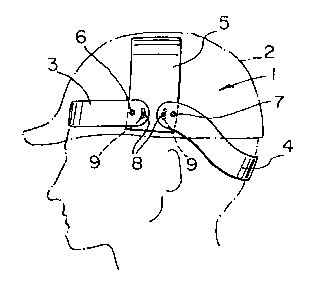Some of the information on this Web page has been provided by external sources. The Government of Canada is not responsible for the accuracy, reliability or currency of the information supplied by external sources. Users wishing to rely upon this information should consult directly with the source of the information. Content provided by external sources is not subject to official languages, privacy and accessibility requirements.
Any discrepancies in the text and image of the Claims and Abstract are due to differing posting times. Text of the Claims and Abstract are posted:
| (12) Patent: | (11) CA 1330847 |
|---|---|
| (21) Application Number: | 1330847 |
| (54) English Title: | HELMET RESTRAINING DEVICE |
| (54) French Title: | DISPOSITIF DE RETENUE POUR CASQUE |
| Status: | Term Expired - Post Grant |
| (51) International Patent Classification (IPC): |
|
|---|---|
| (72) Inventors : |
|
| (73) Owners : |
|
| (71) Applicants : |
|
| (74) Agent: | |
| (74) Associate agent: | |
| (45) Issued: | 1994-07-26 |
| (22) Filed Date: | 1989-09-28 |
| Availability of licence: | N/A |
| Dedicated to the Public: | N/A |
| (25) Language of filing: | English |
| Patent Cooperation Treaty (PCT): | No |
|---|
| (30) Application Priority Data: | None |
|---|
ABSTRACT OF THE DISCLOSURE
Existing devices for stabilizing a safety helmet
such as a hard hat are either unduly complicated or ill
adapted as retrofits for existing helmets. A simple
restraining device for use on new or existing helmets includes
a bracket located at the centre of the interior of each side
of the helmet for pivotally supporting front and rear
headbands. Pins extending through the headbands into arcuate
slots in the brackets limit rotation of the front and rear
headbands with respect to the brackets. A force tending to
lift or rotate the helmet from the wearer's head will cause
the headbands to pivot downwardly and inwardly against the
wearer's head, thus inhibiting removal thereof from the head
of the wearer.
Note: Claims are shown in the official language in which they were submitted.
Note: Descriptions are shown in the official language in which they were submitted.

2024-08-01:As part of the Next Generation Patents (NGP) transition, the Canadian Patents Database (CPD) now contains a more detailed Event History, which replicates the Event Log of our new back-office solution.
Please note that "Inactive:" events refers to events no longer in use in our new back-office solution.
For a clearer understanding of the status of the application/patent presented on this page, the site Disclaimer , as well as the definitions for Patent , Event History , Maintenance Fee and Payment History should be consulted.
| Description | Date |
|---|---|
| Revocation of Agent Requirements Determined Compliant | 2020-09-01 |
| Inactive: Expired (old Act Patent) latest possible expiry date | 2011-07-26 |
| Inactive: Late MF processed | 2008-08-06 |
| Letter Sent | 2008-07-28 |
| Inactive: IPC from MCD | 2006-03-11 |
| Grant by Issuance | 1994-07-26 |
There is no abandonment history.
Note: Records showing the ownership history in alphabetical order.
| Current Owners on Record |
|---|
| CONSTRUCTION SAFETY ASSOCIATION OF ONTARIO |
| Past Owners on Record |
|---|
| BJARKI HALGRIMSSON |
| NICHOLAS SHEWCHENKO |